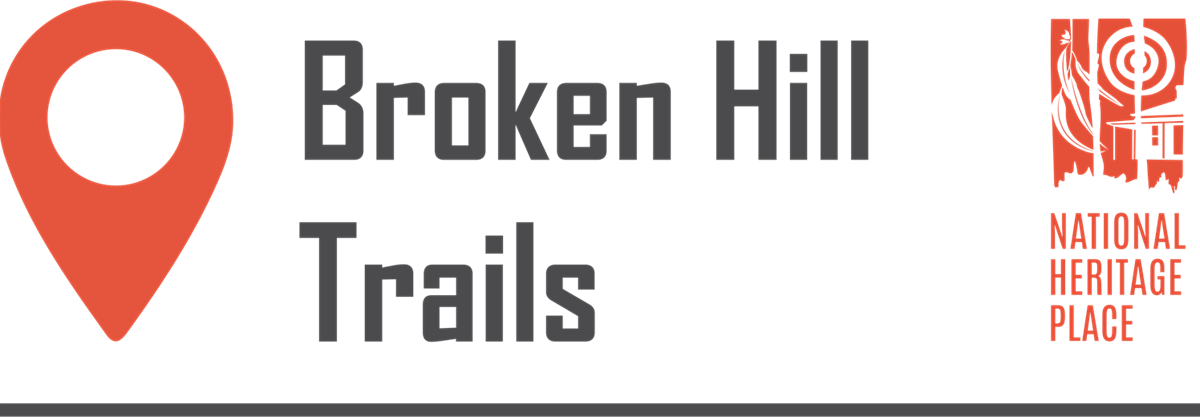
When boundary rider Charles Rasp pegged the first block on the rocky outcrop known as the “broken hill” on September 5, 1883, assuming a potential tin mining opportunity, he set the far West region of NSW on a journey that would lead to the City of Broken Hill being crowned Australia’s First Nationally Listed Heritage City.
The Australian Government’s National Heritage list is a collection of 103 natural, historic and Indigenous places which have been deemed to have “outstanding significance to the nation”. In there, you’ll find natural wonders such as Uluru and the Great Barrier Reef, sitting alongside important architectural places such as the site of First Government House and Sydney Opera House.
However, never before has an entire city been awarded National Heritage status, which makes the addition of the City of Broken Hill even more remarkable.
When Federal Environment Minister Greg Hunt announced that Broken Hill was Australia’s First Nationally Listed Heritage City on January 20th, 2015, it closed the book on 10 years of lobbying for the status and elevated the city to its rightful place in Australia’s national psyche.
“Australia’s Silver City, Broken Hill, is of outstanding heritage value to the nation for the significant role the city and its mining operations have played in Australia’s development towards a modern and prosperous nation,” Mr. Hunt said.
Broken Hill is home to the world’s largest deposits of silver, lead and zinc – yielding over 300 million metric tons of ore since mining began. Early revenues from Broken Hill are largely responsible for the growth and development of cities and towns right across Australia, with the city contributing “hundreds of millions of dollars to government administration, defence, education and research”, according to the Department of the Environment. Whilst the silver, lead and zinc are by far the most profitable minerals in the ground beneath its feet, Broken Hill is also home to a veritable ‘mineralogical rainforest’ with approximately 300 mineral species offering a unique glimpse into the planet’s geological history.
However, it is the people of Broken Hill that have arguably contributed most to the heritage listing. Over 140 years, the rights of tens of thousands of workers have given birth to many laws and provisions that we take for granted today. Broken Hill was not only the birthplace of Occupational Health & Safety and the 35-hour work week, but – thanks to the spread of nationwide worker support resulting from strikes in 1908 and 1909 - it has also been recognised as being the catalyst that put a fire under the trade union movement.
While mining undoubtedly laid the foundations for Broken Hill and was the birthplace of mining giants – BHP and Rio Tinto - other industries have sprung up around it over the years. In the 70s and 80s, the dominant workers’ culture gave way to a local passion for the arts. The city is home to more art galleries per capita than anywhere else in Australia and is home to artists such as Pro Hart and Jack Absalom. It has also become a mecca for the film industry, with movies such as Last Cab to Darwin, Mad Max II and Priscilla Queen of the Desert and television productions such as The Code and Outback ER, flaunting the city and surrounds as their backdrop.
Its tourism industry is now entering its fourth decade, with new sites, such as the Miners Memorial, sitting alongside a landscape of streets that represent some of the key periods in Australian architecture – from Victorian and Federation eras, through to art deco and beyond.
It is a living museum, an artefact that survives in the desert and waits to be rediscovered.
The machine that gave birth to Broken Hill still grinds away underneath. The mountainous slag heap, hauled from the earth for near 140 years, casting a shadow over town at the dawn of each day. Today Broken Hill is a living, breathing time-capsule. Art deco shopfronts welcome customers straight out of a bygone age, and all over town are monuments to men and women who suffered and died so the town could survive.
All of these elements fuse together to make Broken Hill a truly unique Australian city, one that is often described as “a city with a soul”.
You can feel it in the people. You can feel it around you. It’s a living thing. Not many cities or towns can actually say that.
Audio transcript available.